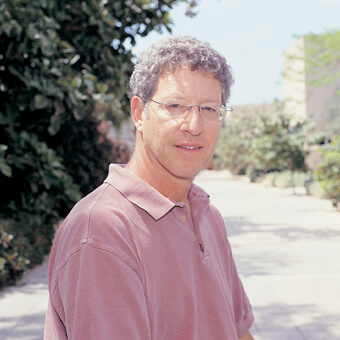The researchers, led by Prof. Ehud Shapira from the Department of Biological Chemistry and the Department of Applied Mathematics and Computer Science at the Institute of Science, used a unique method to determine the "lineages" of cells

The origin of the eggs in the woman's body is a subject that is not completely understood and is subject to controversy. In recent years, the possibility has been raised that the creation of eggs continues even in the adult female - contrary to the accepted theory until now, according to which the female is born with a finite supply of eggs. A later study claimed that the source of these regenerating eggs are stem cells originating from the bone marrow. Scientists from the Weizmann Institute of Science were able to disprove the claim that eggs are created in the bone marrow, and point to new research directions, which will make it possible to check whether the supply of new eggs actually occurs in adulthood. Their findings, based on an original method for reconstructing cell "lineages", are published today in the online scientific journal PLoS Genetics.
The method for determining lineages of cells, developed over the past few years in the laboratory of Prof. Ehud Shapira from the Department of Biological Chemistry and the Department of Applied Mathematics and Computer Science at the Weizmann Institute of Science, is based on the fact that the genetic material in all cells undergoes mutations, and these mutations are transferred to the daughter cells during cell division. It is possible to use these mutations to check if there is proximity between cells, and even determine the degree of proximity (that is, the number of generations until a common parent cell), thus producing a cellular "family tree". Prof. Shapira, together with the members of his group, Dr. Shalu Itzkovitz and Dr. Rivka Ader, in collaboration with Prof. Nava Dekal from the Department of Biological Control, and the research student from her group Yitzhak Reizel, used this method to determine whether it is possible that the origin of egg cells is in Stem in the bone marrow. The research findings show that the cells are very distant from each other genetically, so it is not possible that one of them is the father of the other cell.
The scientists were also surprised to find that the eggs in mature mice underwent more cell divisions than those in young mice. It is possible that the reason for this is that the egg supply is indeed renewed during puberty, but there is also the possibility that the eggs were all created before birth, but went through a different number of divisions, and that eggs originating from a smaller number of divisions ovulate at an earlier stage. Further research will be required to decide between these two possibilities.
"Many central questions in biology and medicine are actually questions about the 'lineages' of cells," says Prof. Shapira. Indeed, a series of studies carried out in recent months by Prof. Shapira and his group members, in collaboration with other colleagues, proved the effectiveness and flexibility of the method. Thus, for example, the scientists tested the "immortal strand" theory, which claims that during stem cell division (in which a new stem cell and a sorted cell are formed), the older DNA strand is transferred to the stem cell. The study revealed that the stem cells found in the intestine do not contain an "eternal strand", and confirmed previous findings on this subject.
Another study aims to answer the question of the relationship between two types of cells found in developing muscle tissue: myogenic cells, from which muscle fibers are formed, and non-myogenic cells, which do not form muscle fibers. The genealogy showed that the degree of closeness between the two types of cells, found in one muscle tissue, is greater than the closeness between cells belonging to the same type - but found in different muscles.
One of the immediate advantages of the system developed by Prof. Shapira's team is that it is a non-invasive review, so it can be applied to human cells. Most of the other studies in the field of development are based on genetically engineered laboratory animals, whose stem cells are marked with fluorescent markers. In addition to being an effective and powerful research tool, Prof. Shapira believes that one day it will be possible to use the new method for diagnosis as well. Thus, for example, doctors will be able to discover through it the history of individual cancer cells, and determine the best treatment method for the tumor.
Noa Chapel-Ilani, Adrian Yanik, Dr. Elad Segev, Prof. Eran Segal and Dr. Yosef Robka from the Department of Computer Science and Applied Mathematics also participated in the research; Tzipora Marks, Ina Horowitz and Adam Wasserström from the Department of Biological Chemistry; Dr. Yehudit Elbaz and Dr. Nava Nevo from the Department of Biological Control; Dr. Avi Mayo from the Department of Molecular Biology of the Cell at the Weizmann Institute of Science; as well as Dr. Gabi Shafer, Dr. Irena Shur and Prof. Dafna Benyahu from Tel Aviv University, and Prof. Karl Skortsky and Dr. Liran Shloush from the Technion and the Rambam Medical Center.

2 תגובות
What a beauty! There is nothing like repairs and updates of things that already seemed closed and safe.